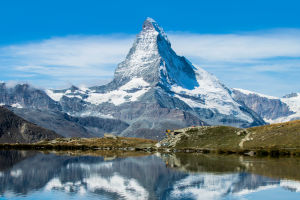How to keep warm while reducing energy costs this winter? People in the Japanese capital Tokyo are encouraged to wear turtleneck sweaters.
The governor of Tokyo said at a press conference recently that wearing a turtleneck can kill two birds with one stone. “Keeping your neck warm is a great way to keep the cold out. Wearing a turtleneck and wearing a scarf will also keep your neck warm. Wearing it like this will save electricity, which is one of the energy-saving ways we can survive the cold winter together.” She wore a white turtleneck with a blue suit that day to demonstrate.
According to her, the French President has led the way in this regard.
According to Agence France-Presse, Macron wore a dark turtleneck sweater with a suit when he delivered a video speech in October. The turtleneck sweater has become the "hot dress" of French government officials this autumn and winter while symbolizing energy-saving initiatives.
Like many countries, in order to avoid power supply shortages in winter, the Japanese government on the 1st of this month asked residents and businesses everywhere to save electricity from December 1st to March 31st next year. These include dressing more indoors, turning down the temperature of the air conditioner, and turning off the lights when the room is empty.
According to Kyodo News, this is the first time since 2015 that the Japanese government has proposed a national winter power-saving requirement. The government will also cooperate with power companies to reward households whose monthly electricity consumption has decreased by 3% or more year-on-year.
Japan has called for the start-up of more nuclear power plants in response to soaring imported energy prices. Japanese media reported that after the accident at the Fukushima Daiichi nuclear power plant of Tokyo Electric Power Company, the Japanese people are still worried about the safety of nuclear power plants. The government may face opposition if it wants to promote nuclear power projects again.
Here are some energy-saving tips in life
1. Water recycling
Use secondary water as much as possible. For example, the water used for washing vegetables for the first time can be used to water flowers; the water used for washing face and laundry can be reserved for flushing toilets, etc.
Shower more, bath less. Showers not only use less water than baths but are also more hygienic.
2. Don't let the TV stand by for a long time
The standby state means that only the remote control is used to turn off the power supply, and the power supply is not completely cut off. Each color TV consumes about 1.2 watts/hour in standby mode.
3. Take the bus or ride a bicycle more often
More use of public transportation such as buses, subways, and trams can not only save gasoline, but also reduce air pollution caused by vehicle exhaust emissions, and can also alleviate traffic jams.
4. Put a Coke bottle in the toilet tank
If the capacity of the flush toilet tank is large, you can put a large Coke bottle filled with water in the tank. The capacity of a Coke bottle is 1.25 liters, this small action can save 1.25 liters of water each time.
5. Use less dish soap
Most detergents are chemical products that pollute water supplies. If there is too much greasy when washing the tableware, you can pour out the remaining greasy first, and then wash it with hot noodle soup, so that too much greasy dirt will not be discharged into the waterway. Kitchen utensils with heavy oil stains can also be cleaned with hot water with soda.
6. Choose energy-efficient appliances. When purchasing a washing machine, television, or other electrical appliances, choose reliable, low-consumption, and energy-efficient products. Cut off the power supply in time when the TV and computer are not in use, which not only saves electricity but also prevents the hidden danger of fire caused by the short circuit of the socket. Turn off the power of the water dispenser when not in use. Keep the refrigerator frost-free.


